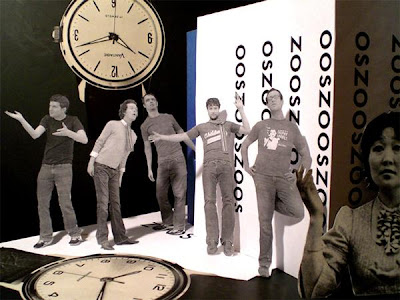
When I mentioned that I had some exciting stuff I was sitting on that arrived while I was on vacation, this 3 DVD set was at the top of the list I was thinking of. It's titled
I Got The Feelin': James Brown in the 60's, and quite simply, it's dynamite! The Hardest Working Man in Show Business, the Godfather of Soul, the King of Funk, Sex Machine, or Soul Brother Number One, call him what you will, but it's impossible to deny James Brown's influence on not just soul music but the world around him as well. And to help prove the latter half of that statement, this DVD set is just what the doctor ordered.
The first disc is titled
The Night James Brown Saved Boston, and includes a documentary that focuses in on a particularly difficult time in American history, 1968, and specifically the beginning of April during which Martin Luther King Jr. was assassinated. All over the country violent unrest spread throughout cities as a result of the death of King, a man that carried the dream of a new country for so many people. James Brown was scheduled to perform a concert in Boston the night after this tragic event, a concert which was viewed as potentially dangerous by various government figures in Boston as a consequence of all the rioting in cities across the country.
Needless to say, the concert did go ahead as planned, and was taped by local television station WGBH to broadcast for free throughout that night. Many attribute the fact that Boston was spared the violent rioting other cities faced to Brown's concert that evening.
The documentary starts with a very brief synopsis of Brown's childhood and then moves forward to the shaky times of the 60's with the Civil Rights Movement and the war in Vietnam challenging a struggling nation. While much of the video focuses in on this particular concert, it also does a good job placing it in the larger context. Included are interviews with members of the band, music historians, politicians, and others who were around to understand the real problems people were facing.
Now, forty years later, we can see what television viewers saw that night on disc two, the actual recording of the concert,
Live at the Boston Garden. While the audio portion of the recording leaves much to be desired (particularly for Brown's vocals, the instruments sound good though - the recording crew admits on the first disc that they were use to recording the Boston Pops, and were completely inexperienced with recording Brown's electrifying style of music), it's absolutely incredible to be able to watch JB move on the stage. He's always moving and you can see the man's energy that never wavers. Of particular interest is the last song, during which people start to clamber onstage and James Brown asks the police to leave them alone and deals with the potentially dangerous situation which could have erupted into violence.
The final disc is titled
Live at the Apollo '68, and includes live footage (in color!) of James Brown performing at the famed Apollo Theater in NYC the month before Martin Luther King Jr. was killed, two tracks from L'Olympia in Paris (one from '67 and one from '68), and the legendary version of
Out of Sight from The T.A.M.I. Show in 1964. While much of the set list is the same as the show at the Garden, it's still a blistering performance that's only enhanced by the color recording, and is interspersed with film of him walking through Harlem and Watts commenting on the state of Black America and the hurdles they needed to overcome.
Put all three of these discs together and you've got an unbeatable package. There's a few full audio cuts below for you to experience, but please take my word for it: the real magic is in seeing James Brown shake, jump, split, gyrate, jive, step, control the crowd like they're on strings, and give them a show that only reinforced that he was in fact the hardest working man in show business.






































